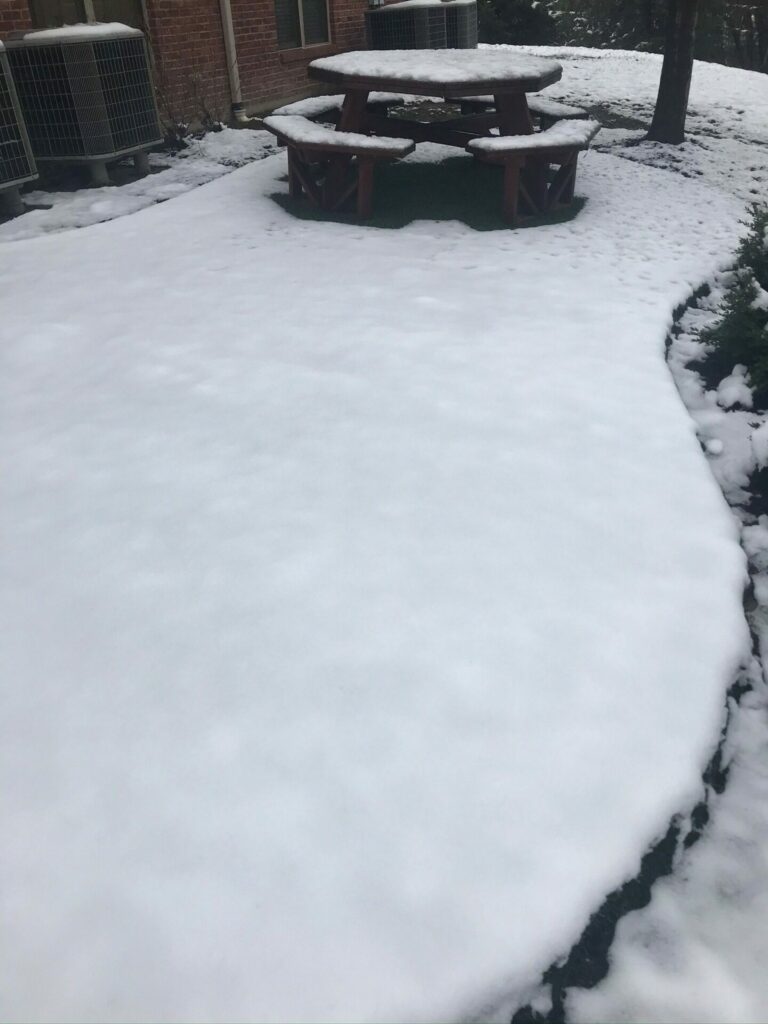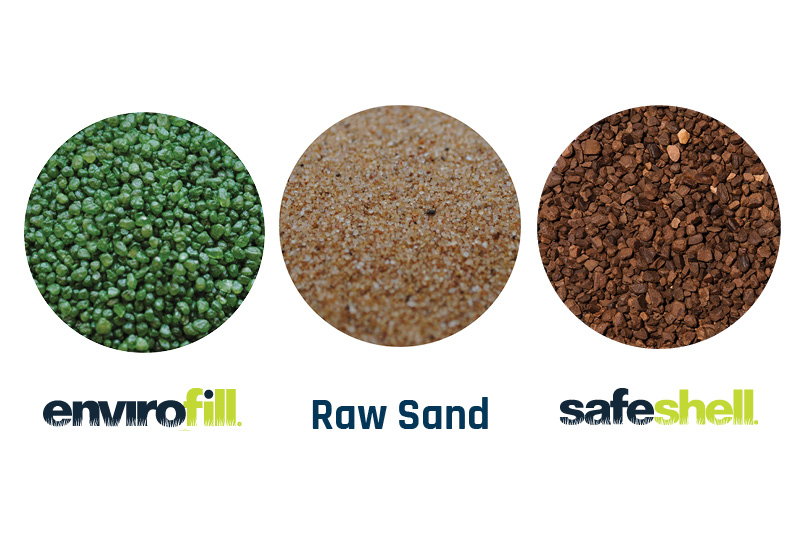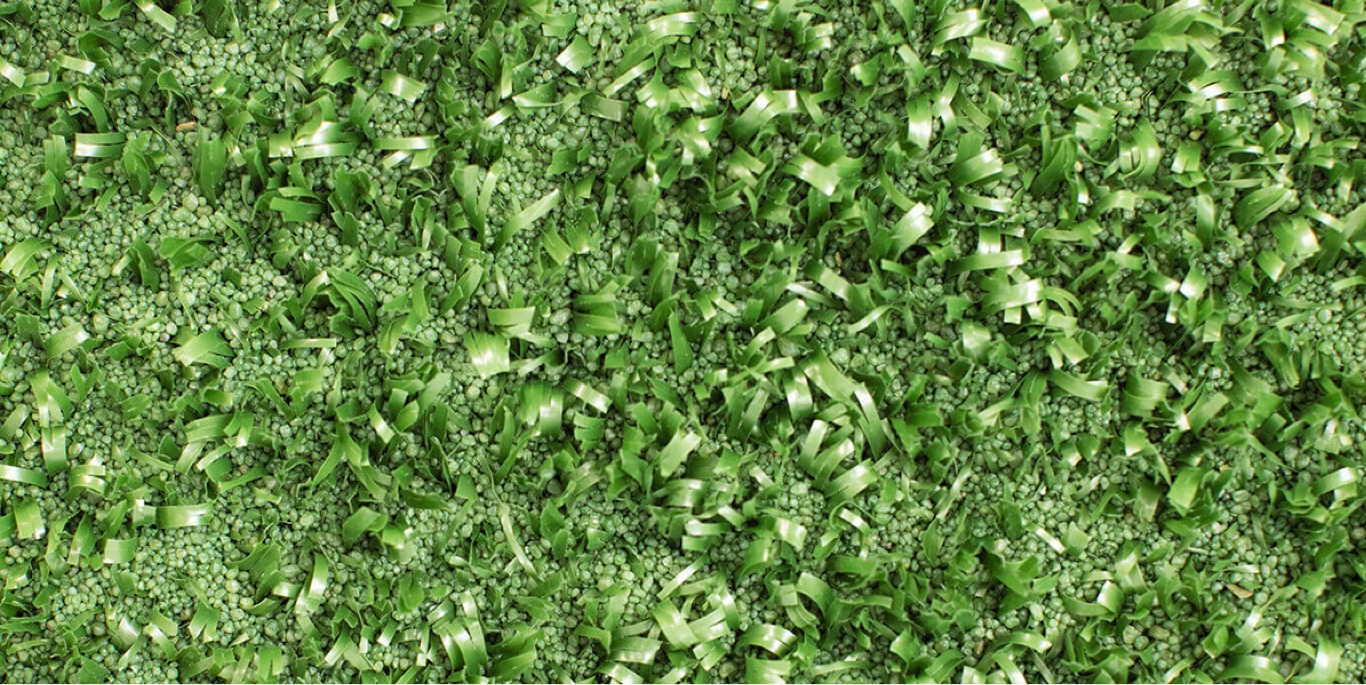
Infill Landscape Blog
Subscribe To Email Updates
Subscribe to our weekly newsletter and we’ll send updates straight to your inbox
How to Rake Leaves on Artificial Turf Without Causing Damage
One of the most significant advantages of artificial turf is that it requires very little maintenance.
However, a few times per year, particularly in autumn, you will want to remove debris and fallen leaves. This is because small items, like leaves and twigs, can block the holes in the turf’s backing.
Fortunately, this chore shouldn’t take more than an hour or two, and we typically see it as a healthy opportunity to roll up our sleeves and spend a bit of time in the sun. If you’re physically unable to rake leaves or pick up debris, then this could be a great chore for a younger family member or friend, or you could consider hiring a local lawn service to help.
The company that installed your turf should have recommendations and some will even offer ongoing maintenance.
Step 1. Pick Up Larger Debris
Before you start raking leaves, walk around your lawn and pick up all the larger sticks or debris. It’s good to do this a few times per year, particularly when there’s been a storm or heavy winds.
Have a fire pit? Then these items often make perfect tinder and kindling for a small fire, which you can light to celebrate this task’s completion! (Always practice fire safety.)
If you don’t have a fire pit, do a quick online search about your city’s lawn waste pickup. Most cities will pick up yard waste if it’s bagged appropriately, either in large brown paper bags or the proper city trash container.
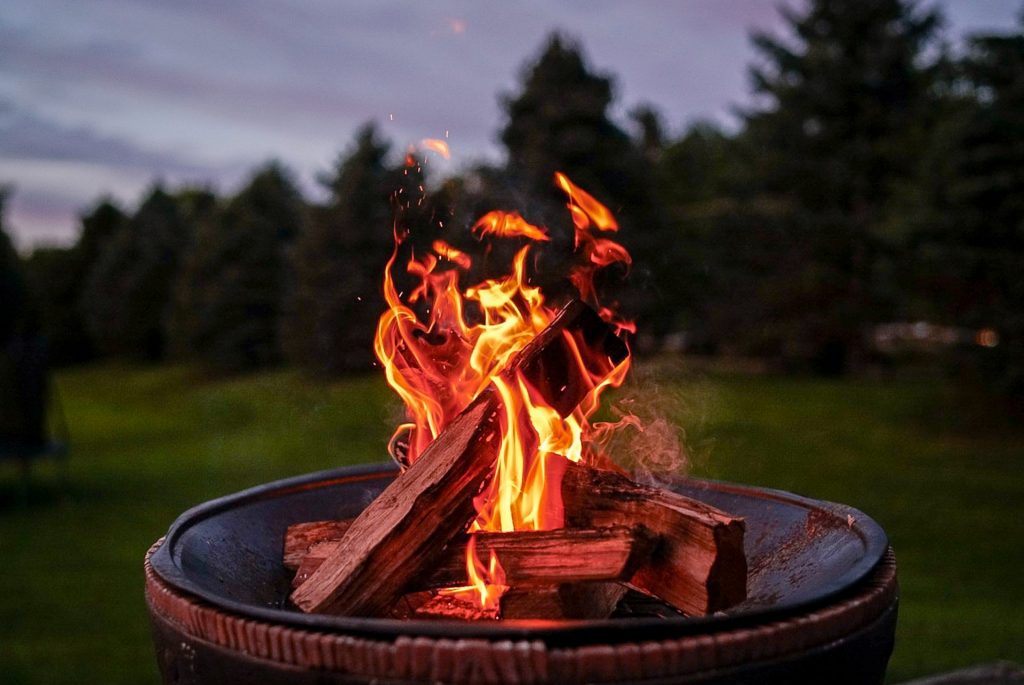
Step 2. Choose The Best Tool For The Job
Next, make sure you’re using an appropriate tool for raking leaves on artificial turf. Heavy metal rakes with metal tines aren’t a good option because they’re the most likely to damage your turf. Instead, look for lightweight plastic or bamboo rakes with curved tines.
Some homeowners opt to use a simple broom for this task, which can also work well. A leaf blower is another excellent option. Leaf blowers make a quick task of dried leaves and debris, but they may not be your best option after a big storm or heavy rain when leaves are clumped together and heavier. As long as you keep the leaf blower at a distance of about 12-18 inches above your artificial turf, you should avoid any potential infill migration.
Tools to Use

Tools You Should Not Use
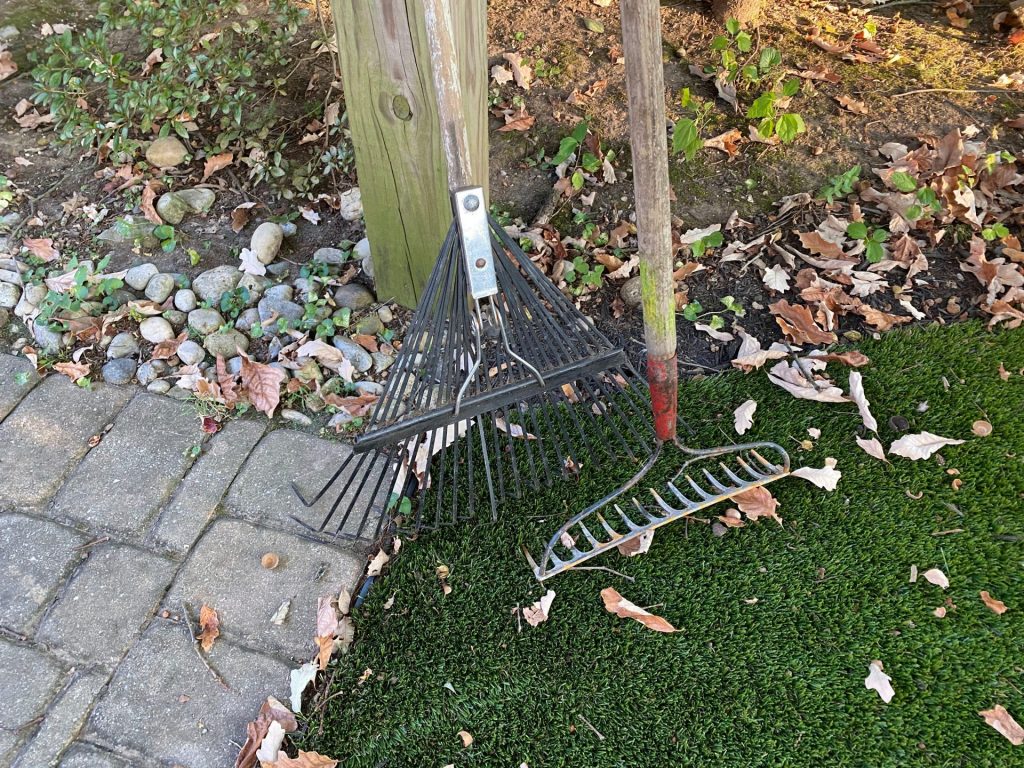
3. Start Raking!
The raking process for artificial turf is identical to the process for a regular lawn. Simply rake the leaves into piles, bag them up, and set them out for your city to pick up. Alternately, if you have a garden or low-maintenance landscaping beds, pile the leaves into those beds to decompose naturally with time and release beneficial nutrients.
Many homeowners are tempted to burn their leaves. However, this is not a good practice for the environment or your health. When leaves are burned, they release carbon monoxide, benzo(a)pyrene (a known carcinogen), and volatile organic compounds that can form ground-level ozone and cause breathing difficulties, especially with those who are young, elderly, or have existing respiratory problems such as asthma.
Factor in the high-risks for wildfires across large expanses of the United States, and you can see why burning leaves is frowned upon—and sometimes even illegal—in many municipalities.

Raking Leaves Off Artificial Turf Is Easy With The Right Tools
Removing leaves and debris from your artificial turf is not a super time-consuming task, but it is one that should be performed a few times per year, especially after storms or during times of heavy leaf fall.
As we look ahead to colder months, see our post Caring for Artificial Turf in the Winter and feel free to contact us with any specific questions you may have. Happy autumn!
Similar Blogs
